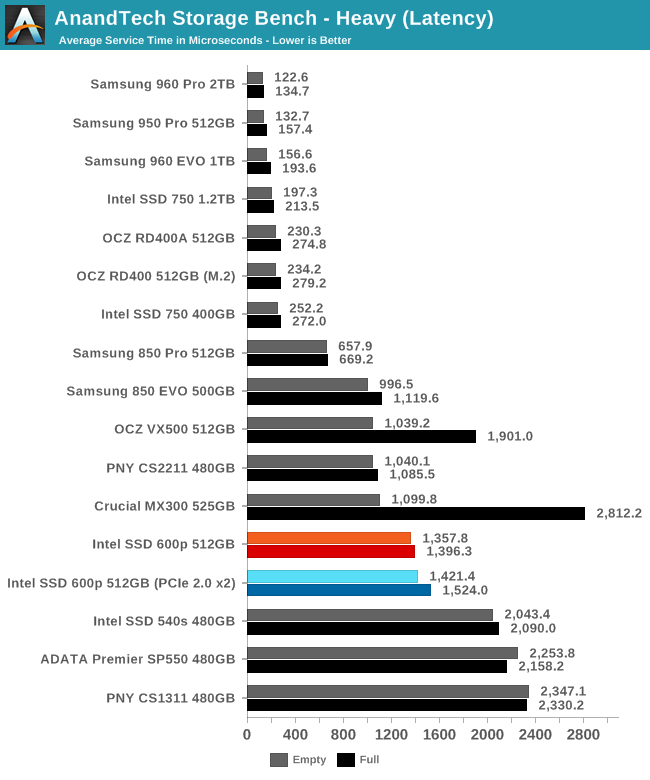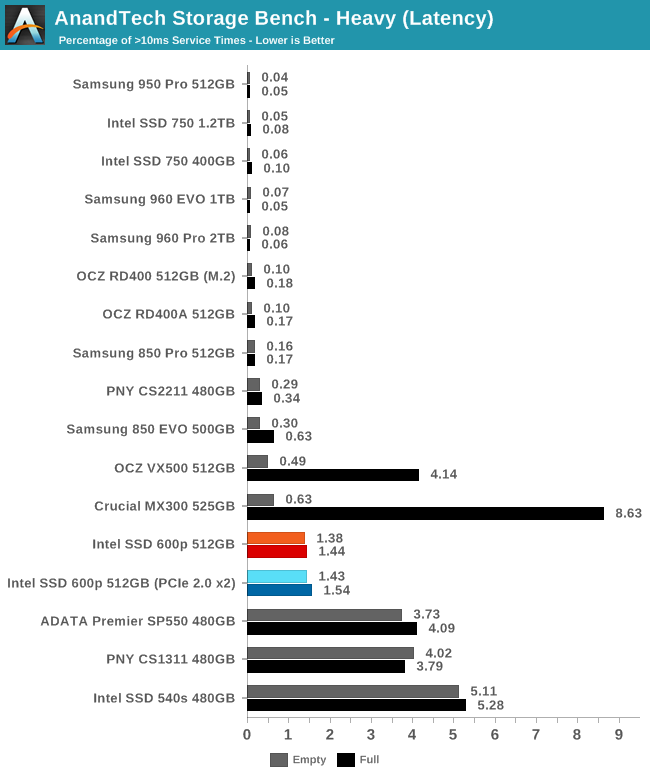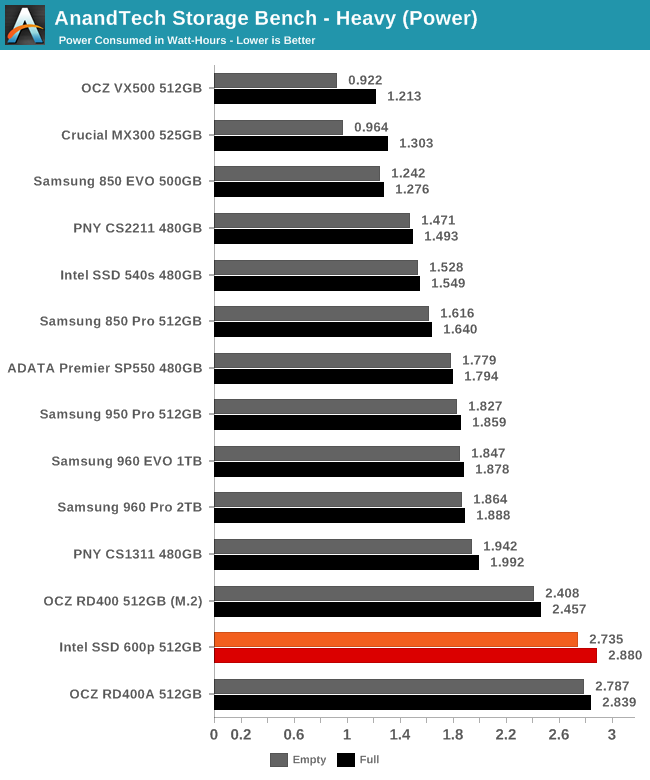The Intel SSD 600p (512GB) Review
by Billy Tallis on November 22, 2016 10:30 AM ESTAnandTech Storage Bench - Heavy
Our Heavy storage benchmark is proportionally more write-heavy than The Destroyer, but much shorter overall. The total writes in the Heavy test aren't enough to fill the drive, so performance never drops down to steady state. This test is far more representative of a power user's day to day usage, and is heavily influenced by the drive's peak performance. The Heavy workload test details can be found here.

It is quite clear that the 600p takes a very different approach to managing its 3D TLC than the Crucial MX300. The latter performed much better than most TLC drives when the Heavy test was run on an empty drive, but fell to last place when the test was conducted on a full drive. The 600p by contrast performed quite similarly in both scenarios due to its fixed-size SLC cache. Unfortunately, this means the 600p has no significant advantage over budget SATA SSDs on this test.

The 600p has lower average service times than the planar TLC SATA SSDs, but it isn't up to the level of the Samsung 850 EVO or MLC SATA SSDs.

The percentage of high-latency outliers shows that the 600p is in a category of its own, sitting above planar TLC SSDs that get thoroughly bogged down by the write-heavy test but not good enough to be lumped together with MLC SSDs.

The 600p is less efficient than any M.2 or SATA SSD on this test, and is only matched by the OCZ RD400A because the latter is doing its own 12V to 3.3V conversion instead of drawing directly from the 3.3V supply.










63 Comments
View All Comments
ddriver - Tuesday, November 22, 2016 - link
A fool can dream James, a fool can dream...He also wants to live in a really big house made of cards and bathe in dry water, so his hair don't get wet :D
Kevin G - Wednesday, November 23, 2016 - link
Conceptually a PCIe bridge/NVMe RAID controller could implement additional PCIe lanes on the drive side for RAID5/6 purposes. For example, 16 lanes to the bridge and six 4 lane slots on the other end. There is still the niche in the server space where reliability is king and having removable and redundant media is important. Granted, this niche is likely served better by U.2 for hot swap bays than M.2 but they'd use the same conceptual bridge/RAID chip proposed here.vFunct - Wednesday, November 23, 2016 - link
> However WHY would you want to do that when you could just go get an Intel P3520 2TB drive or for higher speed a P3700 2TB drive.Those are geared towards database applications (and great for it, as I use them), not media stores.
Media stores are far more cost sensitive.
jjj - Tuesday, November 22, 2016 - link
And this is why SSD makers should be forced to list QD1 perf numbers, it's getting ridiculous.powerarmour - Tuesday, November 22, 2016 - link
I hate TLC.Notmyusualid - Tuesday, November 22, 2016 - link
I'll second that.ddriver - Tuesday, November 22, 2016 - link
Then you will love QLCBrokenCrayons - Wednesday, November 23, 2016 - link
I'm not a huge fan either, but I was also reluctant to buy into MLC over much more durable SLC despite the cost and capacity implications. At this point, I'd like to see some of these newer, much more durable solid state memory technologies that are lurking in labs find their way into the wider world. Until then, TLC is cheap and "good enough" for relatively disposable consumer electronics, though I do keep a backup of my family photos and the books I've written...well, several backups since I'd hate to lose those things.bug77 - Tuesday, November 22, 2016 - link
The only thing that comes to mind is: why, intel, why?milli - Tuesday, November 22, 2016 - link
Did you test the MX300 with the original firmware or the new firmware?